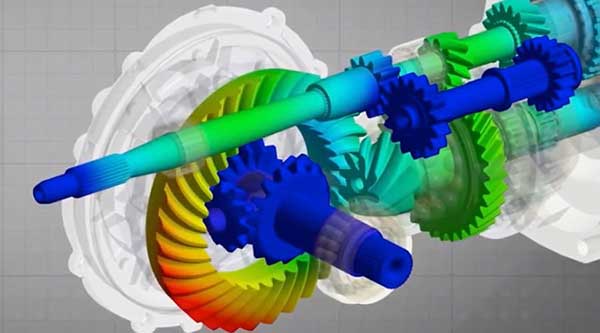Check it out: HPC Maximizes the Value of Ansys Mechanical
Developers updated the company’s simulation solutions to leverage access to faster processors storage systems, and communication sockets available in modern high-performance computing clusters.

A balanced HPC approach requires modern CPUs, sufficient RAM, fast interconnects and optimized contact settings within the software. Image courtesy of Ansys.
Latest News
September 24, 2020
Advancements in computing power have made it possible to simulate larger and more complex engineering problems than ever before on local workstations and compute clusters. More powerful CPUs and GPUs can provide massive speed-ups when it comes to solver performance.
Simulation software developers have responded to these developments by optimizing their solutions to take advantage of all of this power. At Ansys, developers have updated the company’s suite of simulation solutions to leverage access to faster processors, storage systems, and communication sockets available in modern high-performance computing (HPC) clusters.
Ansys recently conducted a webinar explaining how users can accelerate the performance of Ansys Mechanical via an HPC cluster.
According to Ansys, a balanced HPC approach requires modern CPUs, sufficient RAM, fast interconnects, and optimized contact settings within the software.
Upgrading RAM can provide the biggest boost, as it allows the program to hold more solution data in memory during a simulation. Likewise, migrating to a faster network interconnect can also provide acceleration, with an InfiniBand interconnect reducing solution times by at least a third in some cases.
On the CPU side, increasing the AVX instruction set can provide significant speed improvements as well. Ansys has also developed smarter numerical contact algorithms that can take advantage of multiple compute cores, resulting in improvements as high as 25% in solve times.
Check out the Ansys Mechanical webinar here.
More Ansys Coverage
Subscribe to our FREE magazine, FREE email newsletters or both!
Latest News
About the Author
DE’s editors contribute news and new product announcements to Digital Engineering.
Press releases may be sent to them via DE-Editors@digitaleng.news.






